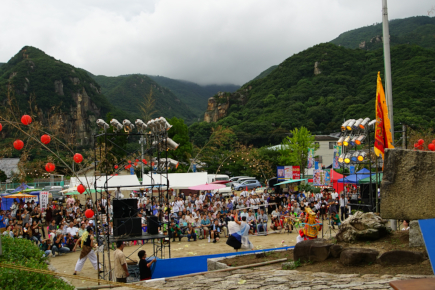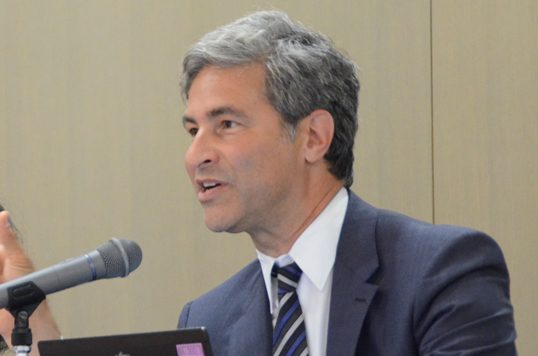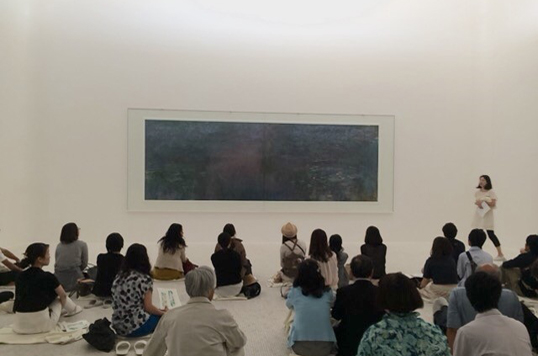Experiencing Teshima Art Museum's Special Morning Viewing Program (April 14, 2019)
The Teshima Art Museum emulates a single water droplet standing still on a solid surface. The installation Matrix has water emerging from various parts of the interior, creating a "spring" that is in motion from morning till early evening.
Teshima Art Museum's special morning viewing program lets visitors catch site of the first signs of the water emerging, marking the beginning of a new day. We started this program in 2017 after receiving many requests asking to see the museum at the start of the day when it is still a blank slate. The morning viewing program is now its third year. We covered its session on April 14, 2019 for this article.
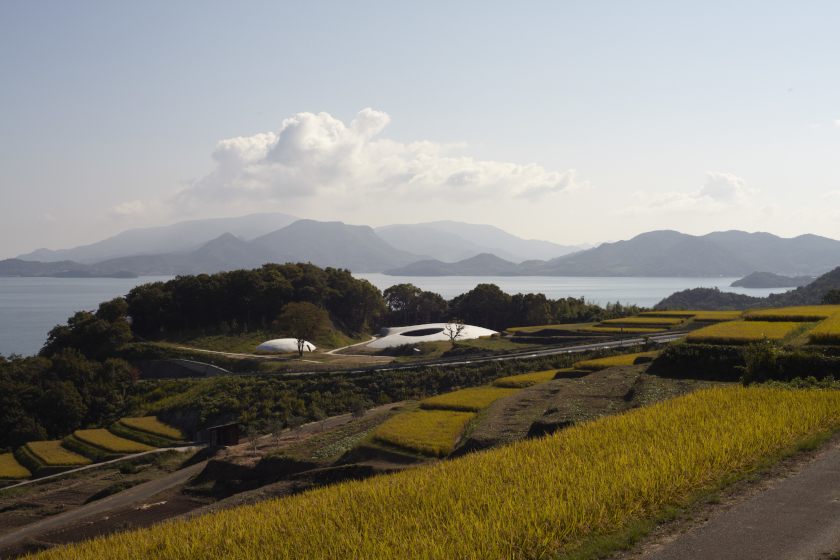
Photo: Noboru Morikawa
The program participants gathered at the museum gate at 8:45, an hour earlier than the usual opening time. While most of the attendees stayed in Teshima from the previous night, some took the first boats from Uno or Takamatsu to Ieura Ferry Port and then came to the museum by bus. After walking into the ticket center, the staff at the reception gave the group an outline of the program.
"The Teshima Art Museum is an art museum that combines the art of Rei Naito, the architecture of Ryue Nishizawa, and the surrounding nature. Water constantly springs from the ground and creates a "spring" throughout the day. You can see it in its fresh state as the water forms. Take your time and enjoy your visit."
We walked by a promenade with serene views of the Seto Inland Sea and expanses of rice terraces. When we arrived at the art space, the museum was completely devoid of water, just as the staff had said. The concrete shell structure measures 40 x 60m width and there isn't a single pillar to support it. It permeated with silence, occasionally interrupted by a birdcall or the sound of the wind. The participants sat down or stood as they pleased, waiting eagerly for the moment the water would start emerging.
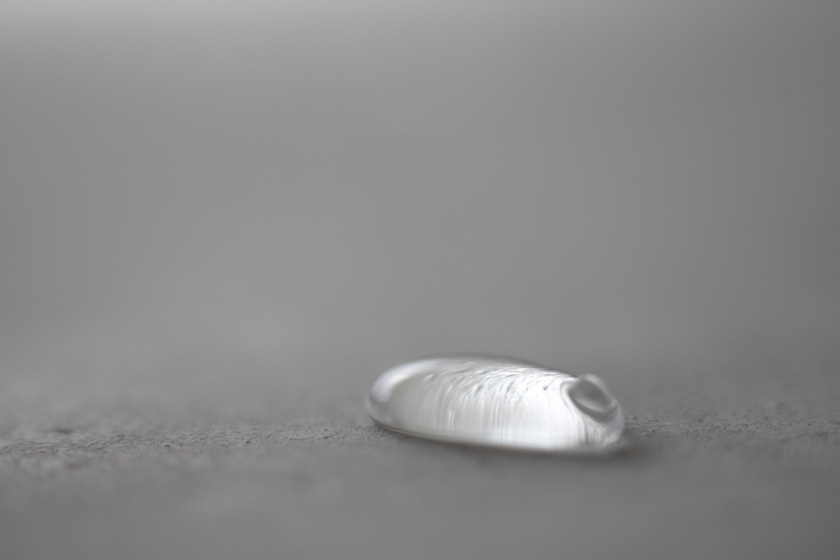
Photo: Noboru Morikawa
We had lost track of how much time has passed in those quiet moments before some water emerged as droplets without a sound and trickled down. If you looked carefully, you could see that the water was coming out of tiny holes on the floor, merging with the surrounding droplets to grow bigger, and then flowing across the museum. The puddles of water go on to become springs. Water flows into the them and they eventually grow until they detach.
That day, it started raining afterwards. The rainwater gushed in from two open holes in the ceiling. The blend of the droplets from the museum and rainwater created a whole new spring. The museum water is actually from a well within the premises. Teshima Karato's water becomes a part of the art in the museum. It eventually flows into the Seto Inland Sea, evaporates into the air, and then returns to the island as rain. Not only does being in this space evoke thoughts about the water cycle, it reminds us of how miraculous and ephemeral life is.
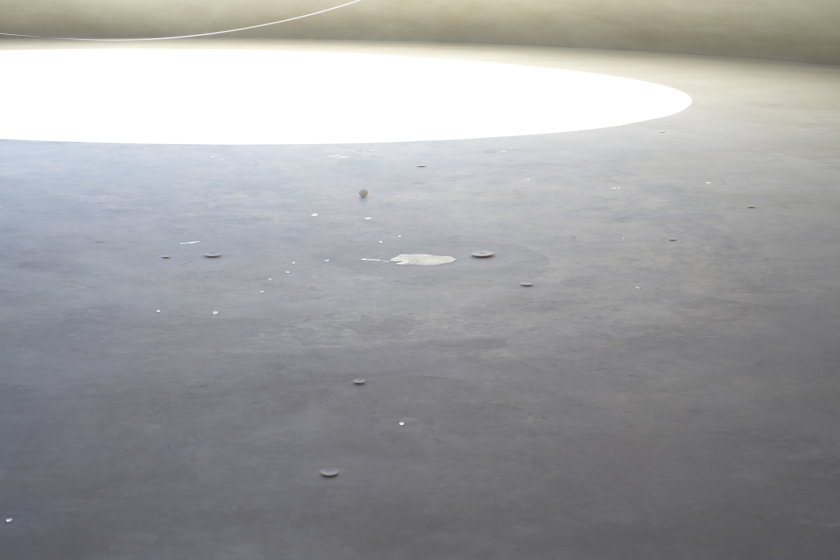
Photo: Noboru Morikawa
The interior of Teshima Art Museum encompasses the surrounding wind, sounds, and light, as well as a "spring" that comes to life everyday. It's ever-transforming. The participants of the special morning viewing program experienced this space from the start of the day and they kindly took a survey detailing their impressions.
"It was an indescribable atmosphere. It had a tension that you couldn't experience anywhere else except in that weather, in the stillness of the morning. There were not a lot of people. The people gathered around the water themselves seemed to be a part of the water."
"It was not just about looking. The time allowed me to delve into my thoughts and face my worries."
"I was able to think about how wonderful, precious, unique, and transformative life is."
The Teshima Art Museum harmonizes art, architecture and the richness of nature. The special morning viewing plan allows visitors to see the installation in the morning light, in a blank state. This program takes place on the second Sunday of every month (except May, June, August, and October). Take this opportunity to experience the morning in a new way at the Teshima Art Museum.
<Teshima Art Museum Special morning viewing program>
Dates:
2019: Jul 7 (Sun)、Sep 8 (Sun)、Nov 10 (Sun)、Dec 8 (Sun)
2020: Jan 12 (Sun)、Feb 9 (Sun)、Mar 8 (Sun)
Time:
9:00-10:00 (approx. 1 hour) ※ Registration: 8:45-9:00
Fee:
JPY2,000 (including admission fee / re-entry until 16:30 on the same day)
※ Free for children 15 and under, and islanders
※ JPY500 for guests who have an Annual Passport
(see details here)


